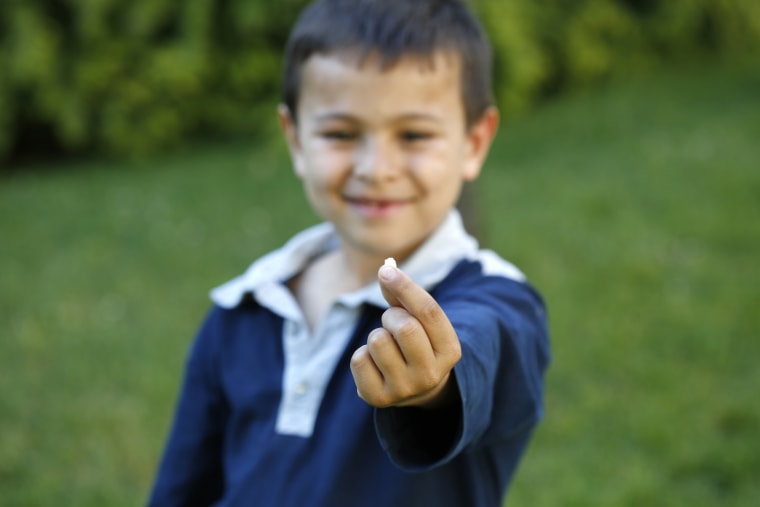The tooth fairy is getting stingier.
Kids cashed in at an average of $3.70 per lost tooth last year, down 43 cents from 2017, Delta Dental Plans Association, one of the nation's biggest dental insurance collectives, said Thursday.
It's the second straight year the tooth fairy has played Scrooge in the annual survey, which Delta Dental has conducted for 21 years. As recently as 2016, parents — um, the tooth fairy — paid out $4.66 per tooth. That's a drop of almost 21 percent in two years.
Noting that the trend in payouts continues to roughly follow the movement of the S&P 500, as it has done for the last 17 years, Delta Dental said: "Parents, do not be surprised if a savvy kid holds on to a lost tooth until market conditions improve."
Other findings from the survey:
- Kids made more bank in the West, averaging $4.19 a tooth, compared to $3.91 in the South, $3.75 in the Northeast and $2.97 in the Midwest. All were lower than they were the previous year.
- Almost half of kids, 48 percent, choose to save their earnings rather than to spend them.
- 30 percent of kids go to bed earlier than usual when they're stashing newly detached teeth under their pillows.
While the poll is designed to be fun, "it is also interesting to see how parents are using visits from the tooth fairy as a learning tool in their home," said Jennifer Elliott, Delta Dental's chief marketing officer.
"Parents share that the tooth fairy is delivering so much more than a tangible gift for a lost tooth, such as teaching our next generation about proper oral health habits and personal financial responsibility in a memorable way," Elliott said.
The poll, which surveyed 1,058 parents of children ages 6-12 from Dec. 31 to Jan. 13, reported a margin of sampling error of plus or minus 3 percentage points.
